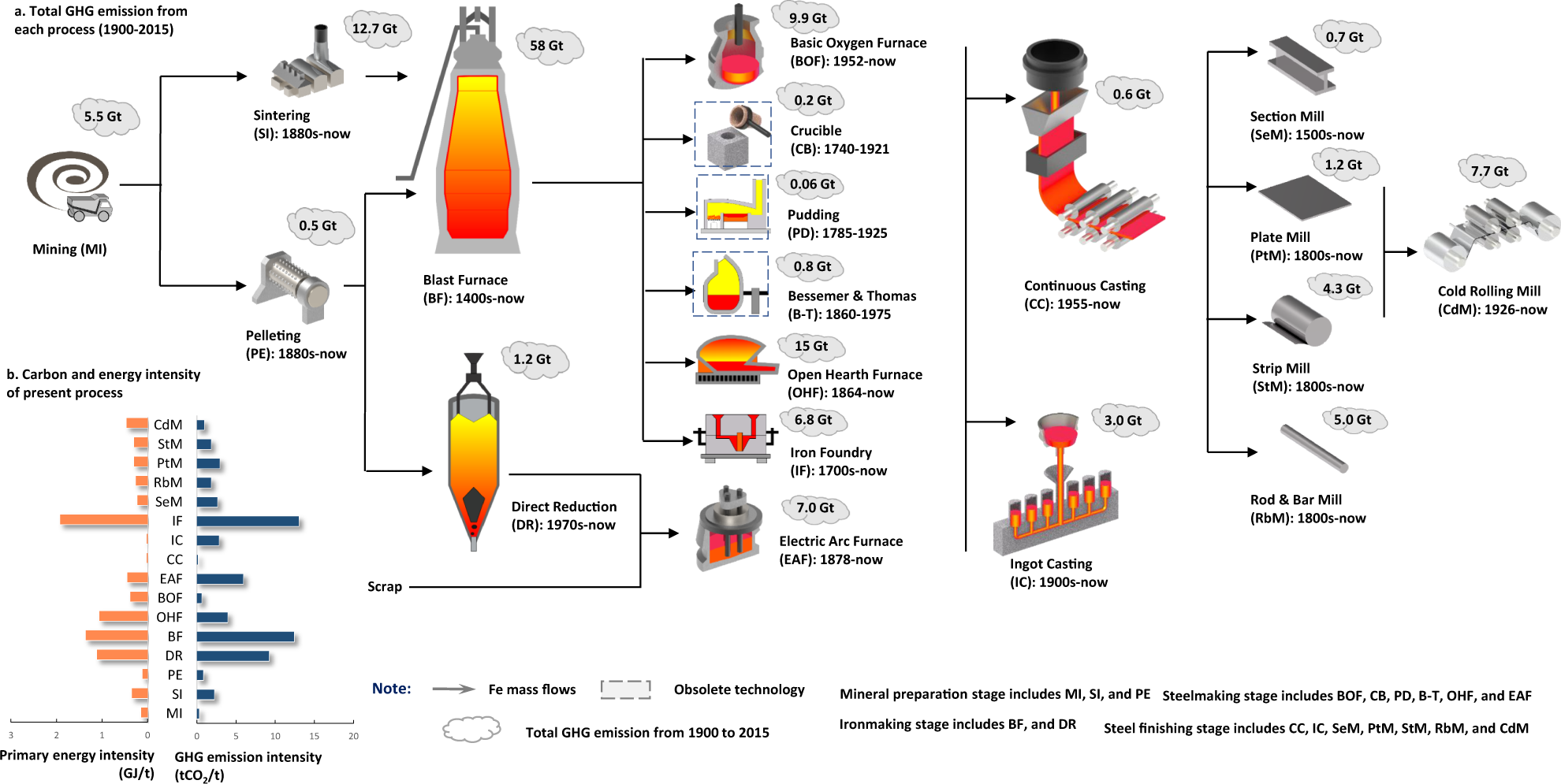Steel is the most used metal in our modern world, but its production is highly energy- and carbon- intensive. To achieve a carbon-neutral and climate-safe future, there is a need for reaching net-zero emissions by around 2050 and net negative emissions thereafter for every sector including the steel industry. However, steel production, together with other energy-intensive industries such as cement and petrochemicals, is considered a difficult-to-mitigate sector. Efforts for future decarbonization is at most urgent needs, and can benefit from understanding its progress to date.
Recently, International research groups led by IUE have tried to integrate dynamic material flow analysis (MFA) with life cycle assessment (LCA) to estimate annual production, efficiency and GHG emissions of global steel production based on 19 dominant processes during 1900–2015. They found that (1) ~45 Gt steel was produced in this period leading to emissions of ~147 Gt CO2-eq. Significant improvement in process efficiency (~67%) was achieved, but was offset by a 44-fold increase in annual steel production, resulting in a 17-fold net increase in annual emissions; (2) Despite some regional technical improvements, the industry’s decarbonization progress at the global scale has largely stagnated since 1995 mainly due to expanded production in emerging countries with high carbon intensity. Their future scenarios analysis further indicates that the expected demand expansion in these countries may jeopardize steel industry’s prospects for following 1.5 °C emission reduction pathways. To achieve the Paris climate goals, they call for a rapid implementation of joint supply- and demand-side mitigation measures around the world in consideration of regional conditions.
This research progress has been recently published in Nature Communication . The research was jointly completed by international cooperation between Institute of Urban Environment Chinese Academy of Sciences, The University of New South Wales, Technical University of Denmark, Chongqing University, Dartmouth College, Shandong University, and University of Maryland. Dr. Peng WANG (Assistant research professor) is the first author. Dr. Morten Ryberg, Prof. Sami Kara, and Prof. Wei-Qiang Chen is the co-corresponding author. The research is funded by the National Natural Science Foundation of China (No. 71904182 and 71961147003) and Key Program of Frontier Science of the Chinese Academy of Sciences (QYZDB-SSW-DQC012), as well as supported by UNSW Postdoc Writing Fellowship and CAST Young Talent Support Project.

Fig. 1: Steel production technologies and their total GHG emissions from 1900 to 2015